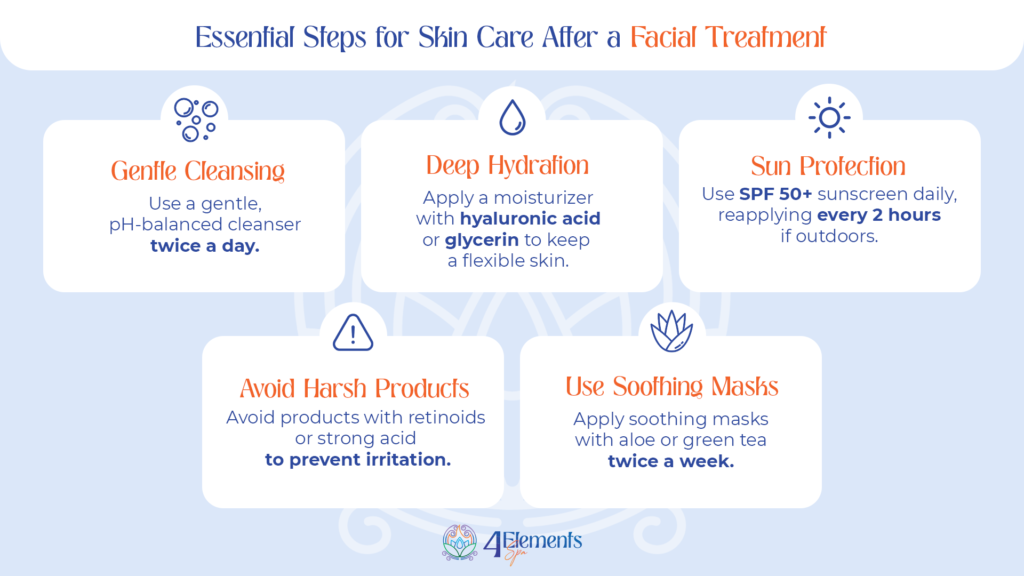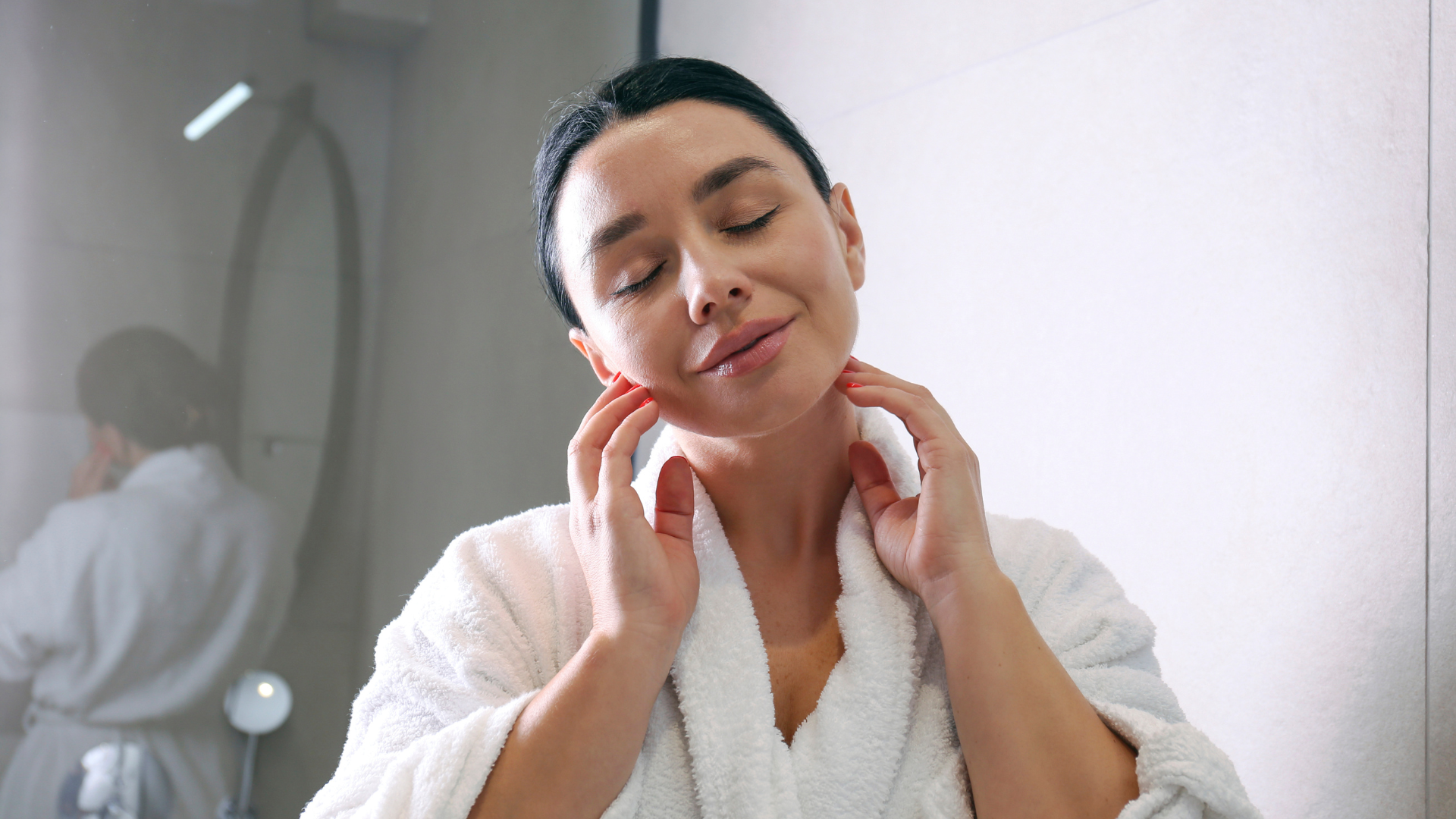Table of Contents
- Introduction
- The Importance of Post-Facial Rejuvenation Care
- Essential Steps for Skin Care
- Gentle and Consistent Cleansing
- Deep Hydration
- Adequate Sun Protection
- Avoiding Harsh Products
- Use of Soothing Masks
- Nighttime Care Considerations
- Complementary Treatments to Maximize Results
- Innovative Transdermal Solutions
- Light Therapy
- Application of Nutritive Serums
- Occasional Gentle Exfoliation
- Healthy Habits for Maintaining Youthful Skin
- Balanced Diet
- Adequate Hydration
- Quality Sleep
- Stress Management
- Conclusion
- Frequently Asked Questions
Introduction
Facial rejuvenation treatments have significantly evolved, offering effective solutions to combat the signs of aging and improve the appearance of the skin. However, to maximize the benefits and avoid potential complications, post-treatment care becomes an essential part of the process.
This article details each step and fundamental recommendations to care for your skin after a facial rejuvenation treatment, maintaining youthful and healthy skin for a longer period.
The Importance of Post-Facial Rejuvenation Care
After undergoing a facial treatment, the skin can temporarily become more sensitive and exposed to external factors that could compromise the obtained results. Lack of post-treatment care can not only reduce the effectiveness of the treatment but also increase the risk of irritation or spots. Therefore, a careful and strategic routine allows for optimal recovery, keeping the skin healthy and free of complications.
Essential Steps for Skin Care
Gentle and Consistent Cleansing
After any facial treatment, cleansing should be a priority but with a “less is more” strategy. It is essential to use a pH-balanced cleanser that is gentle and alcohol-free. The key is to cleanse the skin twice a day, in the morning and at night, to eliminate excess oil and accumulated impurities.
Additional Tip
Use lukewarm water for cleansing, as hot water can dilate blood vessels and increase redness.
Deep Hydration
Well-hydrated skin recovers faster and remains more elastic. Applying moisturizing creams with ingredients such as hyaluronic acid, glycerin, and ceramides is ideal for keeping the skin flexible and protected. Additionally, using a night cream can be beneficial to provide continuous hydration during rest.
Adequate Sun Protection
Sun protection is absolutely crucial. Even after minor treatments, the skin is more prone to sun spots and UV-induced irritation. A broad-spectrum sunscreen with SPF 50 or higher, containing zinc oxide or titanium dioxide, provides an effective protective layer. It is recommended to reapply every two hours if you are outdoors.
Additional Tip
Wear wide-brimmed hats or caps during the first weeks after the treatment to protect your skin from direct sun exposure.
Avoiding Harsh Products
Products with ingredients such as retinoids, exfoliating acids, or strong fragrances should be avoided for at least two weeks after treatment. These compounds can exacerbate sensitivity and cause redness. Opt for hypoallergenic formulas that are dermatologically tested.
Use of Soothing Masks
Incorporating a soothing mask at least twice a week can help reduce inflammation and speed up recovery. Masks containing aloe vera, green tea, or centella asiatica are ideal for calming and restoring the skin.

Nighttime Care Considerations
At night, the skin enters a repair mode, making it an ideal time to nourish it adequately. Use creams or serums that contain restorative ingredients like peptides, vitamin E, or niacinamide, to support skin regeneration while you sleep.
Complementary Treatments to Maximize Facial Rejuvenation Results
Innovative Transdermal Solutions
Transdermal solutions have proven to be one of the most effective techniques for improving the penetration of nutrients into the skin, thanks to advanced technologies that allow reaching deeper layers. If you wish to explore these techniques further, we recommend exploring innovative transdermal solutions.
Light Therapy
Light therapy is an effective complement to rejuvenate the skin after a primary treatment. For example, red LED light helps stimulate collagen production, while blue light is used to combat bacteria and reduce inflammation. Learn more about this technique and its benefits in light therapy.
Application of Nutritive Serums
After a facial rejuvenation treatment, the skin is at its maximum absorption capacity. Take advantage of this moment to apply serums with antioxidants such as vitamin C, vitamin E, or niacinamide, which help protect the skin from free radicals and promote its recovery.
Occasional Gentle Exfoliation
Gentle exfoliation can be beneficial to remove dead skin cells and maintain smooth skin. However, it should be done carefully and only after the skin has fully recovered from the facial treatment. Opt for mild exfoliants that do not contain abrasive particles and avoid exfoliating more than once every two weeks.
Healthy Habits for Maintaining Youthful Skin
Balanced Diet
Diet plays a fundamental role in skin health. A balanced diet rich in antioxidants, healthy fats, and essential vitamins provides the nutrients the skin needs to regenerate and stay radiant. Including foods like berries, avocados, and fatty fish can make a big difference.
Recommended Foods
- Berries (blueberries, strawberries): Contain antioxidants that fight free radicals.
- Avocados: Rich in healthy fats that improve skin elasticity.
- Nuts: Sources of omega-3 fatty acids that help keep the skin hydrated.
Adequate Hydration
Staying hydrated is crucial for having healthy skin. Proper water intake promotes cellular regeneration and eliminates toxins that can affect the skin’s appearance. It is recommended to drink between 1.5 and 2 liters of water daily, depending on your weight and activity level.
Quality Sleep
Quality sleep is vital for cellular regeneration. During the night, growth hormones are produced that help repair and renew skin cells. Therefore, it is essential to sleep at least 7-8 hours to promote younger skin and reduce visible signs of aging.
Stress Management
Chronic stress can have a negative impact on the skin, as it increases cortisol levels, a hormone that can cause acne, dryness, and wrinkles. Practicing relaxation techniques such as meditation, yoga, or deep breathing exercises can help reduce stress and improve your skin’s appearance.
Conclusion
Caring for your skin after a facial rejuvenation treatment is essential to prolong the results and ensure proper recovery. Facial treatments can visibly improve the texture and appearance of the skin, but without adequate post-treatment care, the results can be temporary or even cause undesirable effects. On the other hand, adopting healthy habits such as maintaining a balanced diet, drinking enough water, and managing stress properly will contribute to keeping your skin youthful and radiant for longer. Remember that healthy skin is not only achieved with topical products but also with a holistic approach to your lifestyle. By following this guide and prioritizing skin care after a facial rejuvenation treatment, you will not only be able to extend the results but also ensure the long-term health of your skin.
Frequently Asked Questions
- How long should I wait to apply makeup after facial rejuvenation? It is generally recommended to wait at least 48 hours before applying makeup to allow the skin to recover and for the pores to close properly. This is especially important if the treatment involved exfoliating the upper layers of the skin, as cosmetics can cause irritation or even clog the pores during this period of sensitivity.
- Is it normal for my skin to peel after the treatment? Yes, it is completely normal for peeling to occur with certain types of treatments like chemical peels or microdermabrasion. Peeling is a sign that the skin is renewing itself and removing dead cells to reveal a new layer of skin. It is crucial to avoid picking at peeling skin to prevent scarring or infections. To relieve dryness, use a gentle moisturizer and calming products that help speed up recovery.
- Can I do intense exercise after a facial treatment? It is better to avoid intense exercise during the first 24 to 48 hours after a facial treatment. The main reason is that sweat can contain toxins that, when in contact with the treated and sensitive skin, can cause irritation or breakouts. Moreover, increased body temperature can intensify any redness or inflammation. After this period, you can resume moderate exercise, always ensuring to cleanse the skin thoroughly after each session.
- When should I schedule my next facial rejuvenation treatment? The frequency of treatments depends on the type of procedure and your skin’s specific conditions. For example, mild chemical peels can be performed every 4 to 6 weeks, while more intensive treatments like deep peels or laser therapy may require an interval of 3 to 6 months. It is essential to consult a professional to determine a personalized plan that suits your specific needs and helps maintain optimal results.
- Is it necessary to use sunscreen indoors? Yes, although many people believe that sunscreen is only necessary when going outdoors, UV rays can penetrate windows and damage the skin. Visible light and UV-A rays, which penetrate deeply into the skin, can be present even when indoors, especially if you work near a window. Therefore, applying sunscreen every day is crucial to protect your skin from the cumulative damage these rays can cause.


